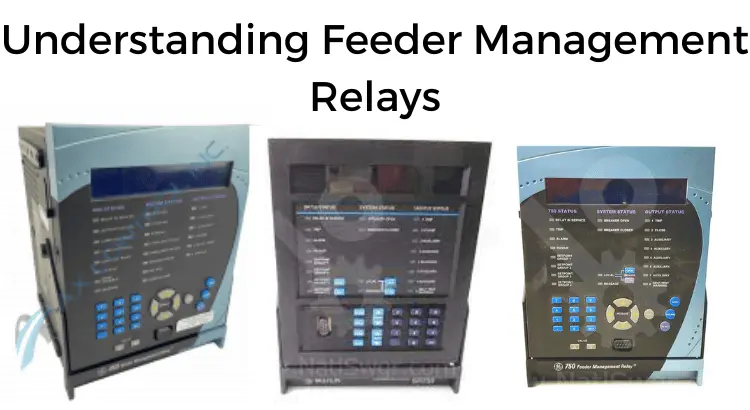Electricity is the foundation of our societies, powering everything from our homes and offices to hospitals and factories. Ensuring the unbroken supply of electricity is of utmost importance, and this is where feeder management relays play a pivotal role.
This article will explore the functions, features, and significance of feeder management relays like GE Multilin 750 feeder management relays in enhancing power system reliability.
Understanding Feeder Management Relays
Feeder management relays are intelligent electronic devices used in electrical power systems to monitor, control, and protect feeder circuits. These circuits distribute electrical power from a substation to various consumer endpoints, such as residential, commercial, and industrial loads.
Feeder management relays are designed to detect and respond to abnormal conditions and faults that may occur on the feeder, ensuring safe and efficient power distribution.

Related Post: Understanding the Factors That Impact Your Business Energy Rate
Key Functions of Feeder Management Relays
Fault Detection and Localization
The primary function of feeder management relays is to promptly detect any faults or abnormal conditions that may occur on the feeder, such as short circuits or overcurrent conditions. Once a fault is detected, the relay determines the location of the fault along the feeder circuit. This information is essential for maintenance crews to quickly identify the faulty section and promptly restore the flow of electricity.
Selective Fault Isolation
Coordination among protective devices in the power system is crucial to minimize disruptions and maintain power supply to unaffected areas. Feeder management relays work in conjunction with other protective devices, such as circuit breakers, to selectively isolate the faulty section of the feeder. This prevents the fault from affecting the entire distribution network, ensuring the continuity of the power supply.
Load Management
In modern power systems, feeder management relays often include advanced load management features. These capabilities allow utilities to monitor the feeder’s load in real-time and make informed decisions to optimize power distribution. These relays can help balance the load across different feeder sections, prevent overloading, and ensure efficient use of electrical resources.
Voltage Regulation
Consistent and appropriate voltage levels are crucial to ensure the proper functioning of electrical equipment and protect sensitive devices from voltage fluctuations. Feeder management relays monitor the feeder’s voltage and take corrective actions to maintain voltage stability, such as adjusting tap positions on voltage regulators.
Protection Coordination
Feeder management relays can be coordinated with other protective devices in the power system to ensure selective tripping. Selectivity means that only the closest relay to the fault should operate, minimizing the impact on the overall power system and allowing power to be restored promptly after a fault is cleared.
Communication and Data Logging
Many modern feeder management relays have communication capabilities, allowing them to exchange information with other relays, control systems, and centralized monitoring centers. Additionally, these relays record and store event logs, providing valuable data for post-fault analysis and system improvement.
The GE Multilin 750 Feeder Management Relays

The GE Multilin 750 feeder management relay is an advanced and versatile protective relay designed for feeder protection applications. The Multilin 750 series is part of the GE “Grid Solutions” Multilin family, which is well-known for its comprehensive protection and control solutions for electrical power systems.
The relay offers advanced features and functionalities, including:
Comprehensive Protection
The Multilin 750 provides a wide range of protection functions, including overcurrent protection, differential protection, undercurrent protection, directional power protection, and ground fault protection. This allows it to address various potential fault conditions in feeder circuits.
Advanced Communication
The relay supports various communication protocols, such as IEC 61850, Modbus, DNP3, and IEC 60870-5-103, enabling seamless integration with substation automation systems and SCADA (supervisory control and data acquisition) systems. This enables remote monitoring, control, and diagnostics, improving system efficiency and reducing maintenance costs.
Adaptive Protection
Multilin 750 relays incorporate adaptive protection algorithms that adjust their real-time settings based on the system’s operating conditions. They can adapt to changing load patterns and system configurations, enhancing the reliability and efficiency of the protection scheme.
Self-Healing Feature
The Multilin 750’s impressive self-healing feature is designed to automatically restore power to healthy sections of the distribution system after a fault occurs. The feature works by isolating the faulted section of the feeder and then restoring power to healthy sections of the feeder. This helps to minimize the number of customers affected by the fault and reduce overall outage times.
Arc Flash Protection
An arc flash is a dangerous electrical explosion or discharge that can occur when a fault or short circuit occurs in the system. It can cause severe injuries to personnel, damage equipment, and disrupt power system operations. The GE Multilin 750 offers arc flash protection as an advanced safety feature designed to mitigate the potential hazards of arc flash incidents in electrical power systems.